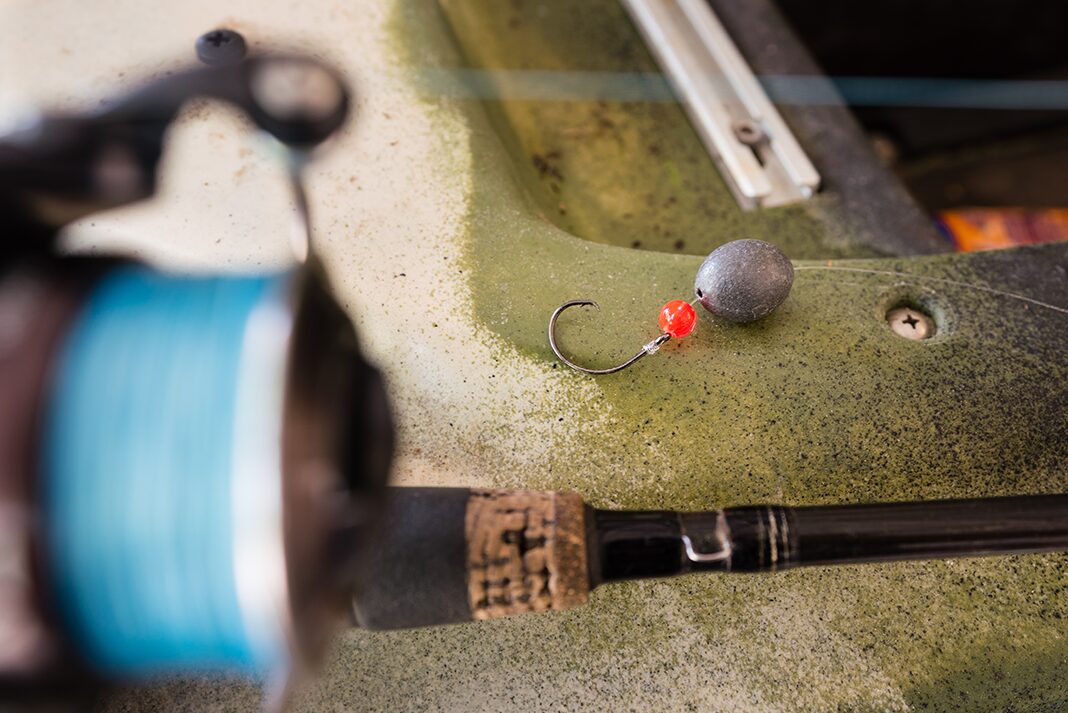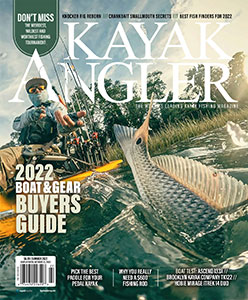Products You May Like
When sporting goods company Bubba invited Kayak Angler to South Carolina’s Lowcountry to test out their new line of premium fishing rods, we sent contributor Andy Hagedon to shoot photos and take notes. Andy returned from the trip with new friends and fish stories, but he was most impressed with a new take on an old tactic. Whether you fish striped bass in New England or redfish, trout and flounder in the South, the knocker rig gets a fish’s attention.
The Knocker Rig Rules for Redfish, Speckled Trout and Flounder
When I’m looking for a new fishing trick, there’s no better source than a full-time charter captain. I was excited to join Captain Rusty Griffin of Redfin Charters out of Charleston, South Carolina to learn new ways to catch my favorite backwater fish.
So, I was surprised when Captain Griffin pulled out Bubba’s new Tidal Pro rods rigged with the classic knocker rig. “The knocker rig is my go-to setup to keep customers landing fish,” he explained.
The knocker rig is a classic that is so simple it is often overlooked. Captain Griffin shed fresh light on the old favorite explaining how the short leader makes casting the rig easier and keeps the hook from snagging the bottom. “Perfect for inexperienced anglers,” he pointed out.
Knocker Rig Walkthrough
Griffin walked me through his take on the knocker rig. Starting with a reel spooled with 20-pound braided line, he used a blood knot to attach 18 inches of 20-pound monofilament leader. The monofilament leader is harder for fish to see and is more abrasion resistant for the sliding sinker.
Then Griffin threaded the end of the monofilament leader through an egg sinker and an eight millimeter plastic bead. Choose an egg sinker from 1/4 ounce to one ounce just heavy enough to keep the bait on the bottom.
Griffin explained a lighter sinker makes it easier to work the bait and feel a bite. A heavier sinker is more likely to get snagged or sink into the mud. The plastic bead creates the knocking sound that gives the rig its name.
At the end of the line, Griffin snelled a 3/0 to 5/0 circle hook. Choose a hook size to match the bait and fish. The hook should not be buried in the bait, keep most of the hook exposed to improve the circle hook’s performance.
Using a circle hook reduces the chance of deep-hooking the fish. The hook’s design encourages it to hook the fish in the corner of its mouth instead of lodging in the gills or gut.
Great for Inexperienced Anglers
Griffin prefers the knocker rig because it is easy to fish. “Just cast it out and let it sit on the bottom,” he instructed me.
If the bait doesn’t get a bite, he works the rig slowly across the bottom giving it a jig with the rod tip and a long pause. “Each time I bounce the bait, the sinker slams against the bead making a clicking sound like a fleeing shrimp or injured baitfish.”
In coastal South Carolina’s swift, muddy marsh water, fish use all of their senses to hunt, especially hearing. The knocker’s sound and vibration draws in hungry fish.
The knocker rig makes it easier to hook a fish, too. When the fish takes the bait, the line slides undetected through the sinker. Using a circle hook requires the angler to feed the fish for a second before coming tight on the line and pulling the hook into the corner of the fish’s mouth.
Once the fish is on, the sinker slides down the line to the hook so it doesn’t tangle or snag.
While fishing with Captain Griffin didn’t produce a secret tactic or sneaky trick, I rediscovered a new appreciation for an old rig every angler should have in his arsenal.
The classic knocker rig is simple, yet effective. | Feature photo: Andy Hagedon

 This article was first published in the Summer 2022 issue of Kayak Angler Magazine.
This article was first published in the Summer 2022 issue of Kayak Angler Magazine.